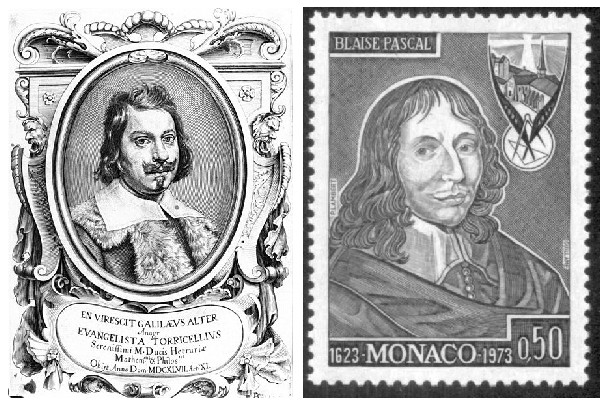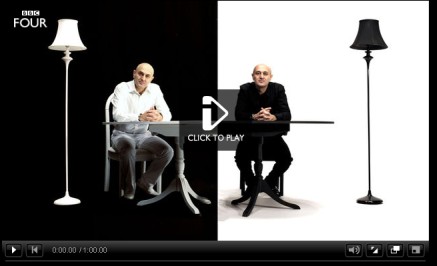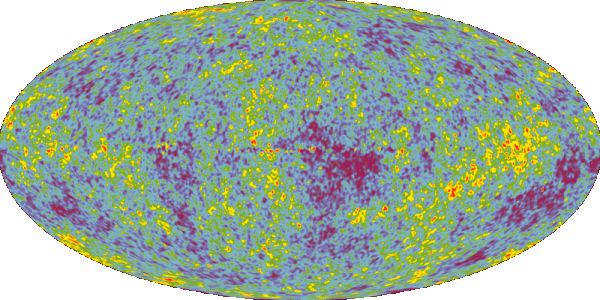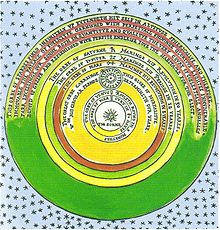“Auntie”, better known as the BBC, has just treated us to a two-parter, Everything and Nothing, by Jim Al-Khalili. He thoroughly knows his history of science, rather than treating it as an add-on, and delivers the significance of what he says without spoiling it through philosophy and vain deceit” [1].
The blurb says:
Two-part documentary which deals with two of the deepest questions there are – what is everything, and what is nothing?
In two epic, surreal and mind-expanding films, Professor Jim Al-Khalili searches for an answer to these questions as he explores the true size and shape of the universe and delves into the amazing science behind apparent nothingness.
Now the word “epic” is used very freely these days, but here it is deserved. He surely does tell the story of science like an epic, starting in the Shire (Classical Greek times, usually), but as always with science, unfinished, because we have yet to cast the Ring into the Cracks of Doom.
Everything, or Why is the sky at night dark?
Jumping from the mediaeval view, we rapidly find ourselves, myself included, introduced to Sir Thomas Digges (1546 – 1595), an English mathematician and astronomer. He was the first to expound the Copernican system in English, but discarded the notion of a fixed shell of immoveable stars to postulate infinitely many stars at varying distances; he was also first to postulate the “dark night sky paradox”. [Wikipedia]
Marching though history we meet William Herschel (1738 – 1822) and his sister Caroline (1750 –1848), who mapped the Milky Way – but what and where are these “nebulae” they keep observing? Forward again to Friedrich Bessel (1784 –1846), who gives us the parallax technique to measure the distance to the nearest stars, but most stars in our galaxy are too far away from this. 
Enter Henrietta Swan Leavitt (1868 –1921), who discovers the use of Cepheid variables to measure much longer distances.
Alas, the lady had no access to a telescope in the male-dominated environment of that time, and had to use other people’s photographic plates. Soon afterwards, Edwin Hubble (1889 – 1953) built on her work to bring us the distance to Andromeda and galaxies beyond. (I told you this was an epic!)
From astronomy to mathematics, and back to the Shire again with Euclidean geometry, with 2000 years and more before Gauss tells us how to measure the intrinsic curvature of a surface from within that surface, and Riemann extends that to higher dimensions. Over 70 years later, and Einstein is pulling out his hair, figuratively at least, to find the mathematics for General Relativity, and finds it in Riemann’s work. So our 3-dimensional space is curved outside itself.
But alas! General relativity does not seem to allow the flat static universe, so Einstein introduces the cosmological constant, spoiling the beauty of the basic GR equation. Enter Hubble again, with the expanding universe. Einstein’s ugly cosmological constant is now redundant, and he admits that it was “his biggest blunder”.
All of which implies that space itself must have hand a beginning. Enter the Big Bang. Which brings us to WMAP with that by now classical map of the cosmic background radiation.
Now we are reaching the end of the first part, and Al-Khalili comes out with this classic one-liner:
“OK, so here it is – here’s where I hope this all makes sense.”
So that’s (almost) everything. Beyond the horizon of the observable universe, there may be gazillions more stars, but their light hasn’t had time to reach us yet. And because the universe is expanding, it never will.
So what about Nothing?
We start in the Shire again, with Aristotle and “nature abhors a vacuum”. Again, this one lasted roughly, but perhaps not quite 2000 years, when Evangelista Torricelli (1608 – 1647), in attempting to find out, for his patron the Grand Duke of Tuscany, why a suction pump could only raise water about 30 feet (they didn’t have metres in those days), he invented the mercury barometer (1643) and in so doing created the first laboratory vacuum. Five years later, Blaise Pascal (1623 –1662), whose health was not up to it, persuaded a friend to repeat the mercury barometer experiment while climbing up a nearby mountain. Years later, this earned Pascal the honour of having the SI unit of pressure named after him.

In the nineteenth century, after about a century of Newton’s corpuscular theory, people were suddenly made aware that light behaves like waves, thanks to the experiments of Thomas Young (1773 – 1829), so throughout that century they were searching for evidence of the luminiferous ether which was believed necessary to carry those waves. However, theoretical developments like Maxwell’s electrodynamics and Einstein’s relativity, and observations such as the Michelson-Morley experiment, laid the luminiferous ether to rest. Moreover, the vacuum was becoming big business, what with the incandescent light bulb and the thermionic valve. Enter quantum mechanics.
All seems well at the start, but then we go to Bishop Road Primary School in Bristol. There we find the young Paul Dirac (1902 – 1984) [2], who in 1928 will bring together quantum mechanics and special relativity. After three years, this leads him to predict the existence of the positron which was discovered the next year.
But more dramatically, the whole concept of antimatter is created. This is illustrated as follows by Jim Al-Khalili himself. (If those two meet, though, prepare for fireworks!)

Bring this together with Heisenberg’s uncertainty principle, and one has the quantum vacuum, in which particle-antiparticle pairs appear and disappear in a very short of interval of time. This is observable in the laboratory, via the Lamb Shift.
Coming now to this “baby photo” of the Universe, we are told that this irregularity in the cosmic background radiation is due to quantum vacuum fluctuations at the time of the Big Bang. These give rise to the large-scale structure of galaxies and galaxy clusters we observe today. In this way, says Al-Khalili:
“Nothing really has shaped everything.”

[1] Colossians 2:8
[2] Followed two years later by Archibald Alexander Leach, who went to become Cary Grant.
Front page image: The Heart and Soul Nebulae, with the Arabic for “the Fullness and the Void”.






Comments